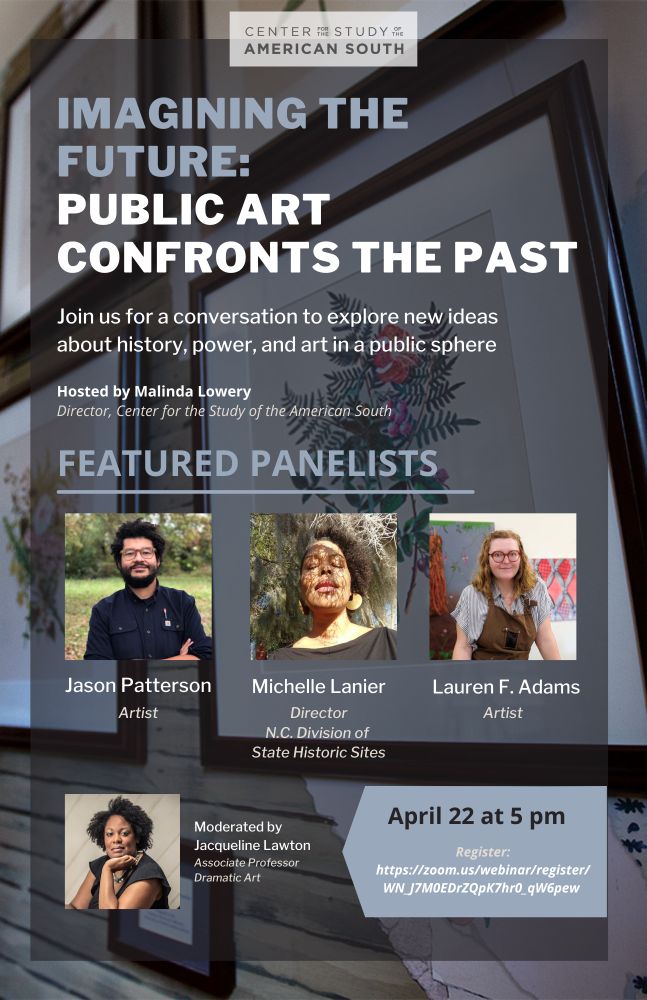
Imagining the Future: Public Art Confronts the Past
April 12, 2021
Video recording on YouTube
Join us for a conversation about the creation of memories in public space and the power of art in the public sphere. We will be speaking with two artists – Lauren Frances Adams and Jason Patterson – whose work critically engages and analyzes items and symbols created in the nineteenth century. Using their art as a focal point, we will discuss the power of art to encourage the public to think differently about the meanings conveyed, then and now, in site-specific settings.
Introduction & closing remarks by Malinda Maynor Lowery, Professor of History, UNC-CH, and Director of the Center for the Study of the American South (CSAS)
Moderated by Jacqueline Lawton, Associate Professor, Dramatic Art, UNC-CH
Panelists:
Lauren Frances Adams, Artist
Lauren’s wallpaper art, “In Faithful Remembrance of Cornelia Phillips Spencer, and to the Truth-Loving People of North Carolina”, is displayed in Love House, home of CSAS. This house was built in the 1800s and maintained by Cornelia Spencer, a white woman whose decor reflected her Southern ideologies. Lauren’s art puts Spencer’s own words back in a space that is now used in a completely different way.
Jason Patterson, Artist
Recreating and reimagining historical documents, Jason focuses on portraiture and frame-building, modeling the frame after the time period the art represents. His work is a catalyst for things that should happen, addressing “…often unknown histories of white supremacy and racial inequality that have existed in this area for centuries and that continue to influence the social conditions.”
Michelle Lanier, AfroCarolina Folklorist and Womanist Cartographer
Michelle Lanier is an AfroCarolina Folklorist public humanities professional, filmmaker and keeper of memory. This seasoned public humanities professional is the first African American director of the state’s 25 historic sites. Michelle unpacks the complex ways cultural and historic spaces tell stories, which stories they tell, and why.